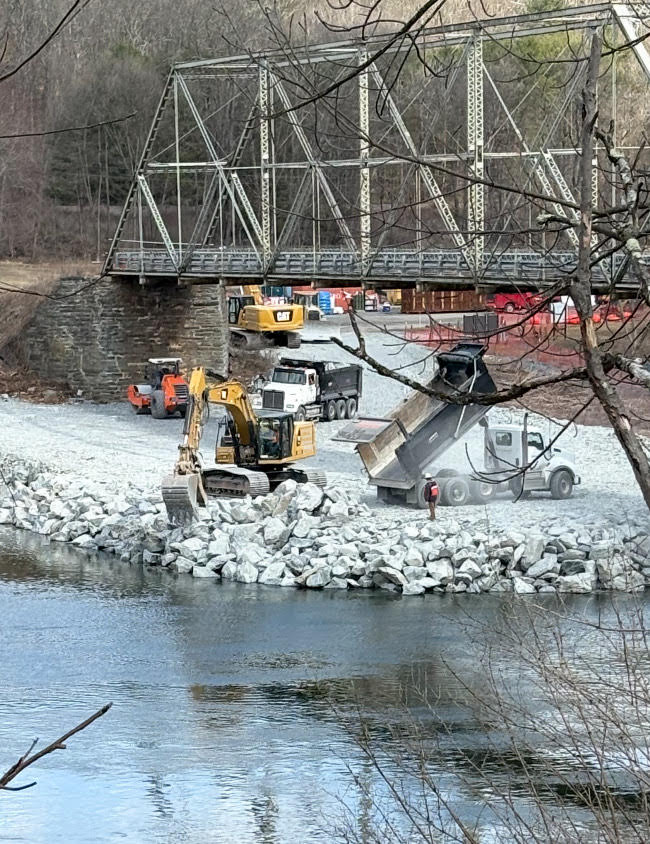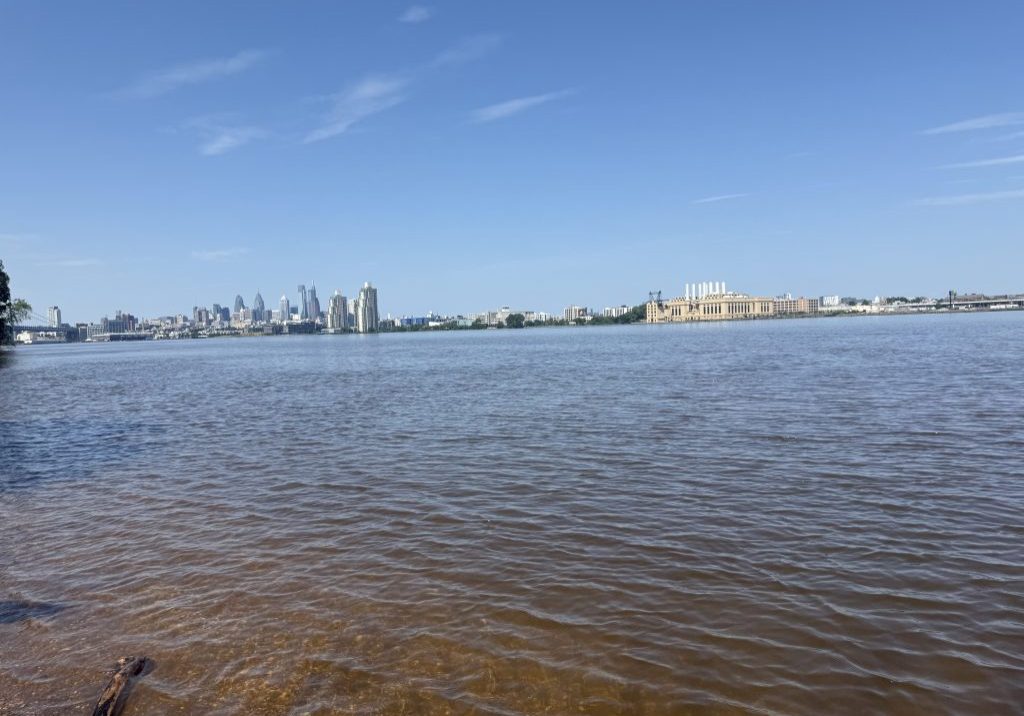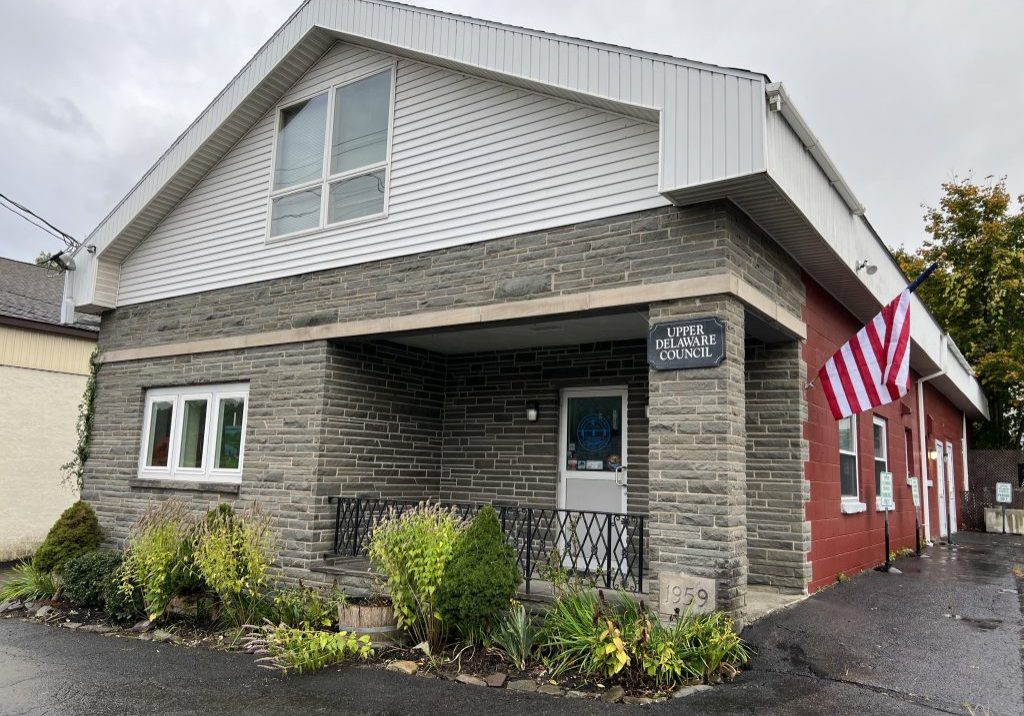
Federal judge rejects efforts to stave off Skinners Falls Bridge demolition
| April 16, 2025
A federal judge in Pennsylvania on Tuesday resoundingly rejected efforts by preservationists to halt the planned demolition of the Skinners Falls Bridge over the Delaware River, saying that the government had persuasively made the case that it poses a public safety hazard.
The judge, Karoline Mehalchick, of the U.S. District Court for the Middle District of Pennsylvania in Scranton, Pa., had originally granted an emergency temporary restraining order on April 9 and then followed that with full hearing on Friday.
In her order from Tuesday, the judge struck down a request by Damascus Citizens for Sustainability to stop the planned demolition of the beloved bridge, which the group’s director described as “poetry in steel.”
Opened in 1902, the bridge spans the Delaware and connects Milanville, Pa., and Skinners Falls, N.Y. The historic Baltimore truss-style bridge has linked the two communities for generations into what many say is one community.
The bridge has fallen into such a state of disrepair that the Pennsylvania Department of Transportation, citing the danger the bridge poses to anyone navigating beneath it, abandoned initial hopes to rehabilitate the structure and instead plans to demolish it with explosives.
PennDOT is set to begin removing the bridge by mechanical means starting on Thursday, April 17, starting on the New York side.
The fishing access area and parking lot will be inaccessible for public use during construction. River use in the vicinity of the bridge will also be restricted. Recreational users should exit the river upstream at Damascus, Pa., and re-enter downstream at Narrowsburg, N.Y., according to PennDOT.
Judge sides with PennDOT
In its court action against PennDOT, the Federal Highway Administration and other related parties, the citizens group maintained that the government failed to fulfill its responsibilities to the community, the bridge and the Pennsylvania-New York Interstate Bridge Commission through “its long-term neglect of the historic structure.”
Further, Damascus Citizens for Sustainability maintains that the bridge is not in a state of imminent collapse, that it can be restored and that there are ways to make that possible without endangering the public or having a significant impact on the use of the Delaware River by anyone engaging in recreational activities as the process of preservation takes place.
However, the judge noted in her order that more harm would come in granting the plaintiff’s request, considering the hazard the bridge poses.
“While the court acknowledges plaintiffs’ position that they will be harmed if the bridge is demolished, expert testimony supports that the bridge is already on the verge of a collapse,” the judge wrote. “Expert testimony supports that the bridge’s seemingly inevitable collapse would endanger life, property, and the environment, and thus the public. Delaying the bridge’s demolition exacerbates these issues, especially considering the busy summer season which will soon bring many visitors to the Delaware River area. Further, defendants have demonstrated that they have invested a significant amount of money and effort into investigating whether the bridge can be salvaged and organizing its demolition.”
Activists say bridge is victim of neglect
PennDOT has said that the discovery last year of a masonry abutment on the New York side that has decayed beyond salvation helped seal the bridge’s fate. Officials have said there has been a shift and rotation of the abutment that will only worsen.
The judge took note of that in her ruling, citing expert testimony at the hearing that the abutments and truss had gotten noticeably worse between October 2024 and January 2025 and that “once one abutment fails, the entire structure is likely to collapse into the river.”
A consultant for Damascus Citizens for Sustainability, Joe Levine, who is an architect with experience in historic restoration projects, disputed that outlook and described PennDOT as having “been negligent in adequately maintaining this historic landmark and continues to let it get worse.”
“In what appears a decision of convenience they have determined that it is at risk of imminent collapse and must be demolished,” he added.
The plaintiffs also argued that the government agencies had violated the National Environmental Policy Act, a section of the Department of Transportation Act and the National Historic Preservation Act. They have argued that the bridge deserves special consideration given its listing on the National Register of Historic Places, which include the bridge itself and the Milanville Historic District.
There have been no announced plans to replace the bridge. A representative of PennDOT could not be immediately reached for comment on Wednesday about the judge’s ruling.
History of repairs
The tug-o-war about the future of the bridge dates back years and has been the source of angst among some residents who revere the piece of infrastructure as both practical and historical.
But the bridge has also been slowly but steadily deteriorating, according to PennDOT and has been the subject of years of emergency repairs, closings and re-openings.
The bridge has had two major rehabilitations, in 1974-75 and 1986, in addition to undergoing emergency repairs in 2010, 2012, 2013 and 2016. It was originally constructed with a capacity of nine tons, which was reduced to seven tons in 2007, and reduced again to four tons in 2013.
It has been fully closed to all traffic — vehicular, cyclists and pedestrians — since October 2019.
Though a loss, claiming victory
Barbara Arrindell, the director of Damascus Citizens for Sustainability, said in a statement on Wednesday that the denial of the injunction “does not negate the validity of the valiant advocacy by Damascus Citizens for Sustainability and countless people in our region and beyond who crusaded for years for the preservation of this historic and restorable landmark against the destructive power of PennDOT.”
She accused PennDOT of having played “three-card monte with the public and the bridge with deceit and hidden agendas.”
She added that though her group may have lost the court case, “the fact that we fight with facts and purpose means that we are, in actuality, the winners.”







